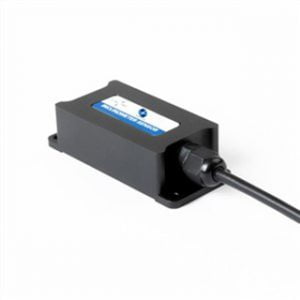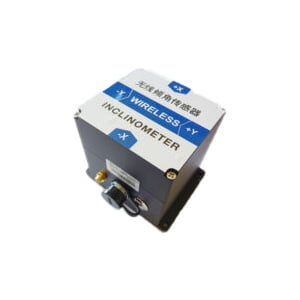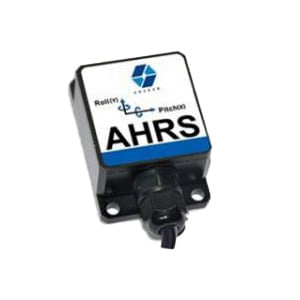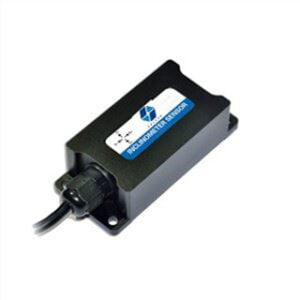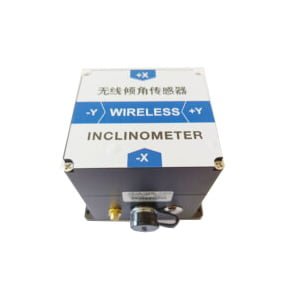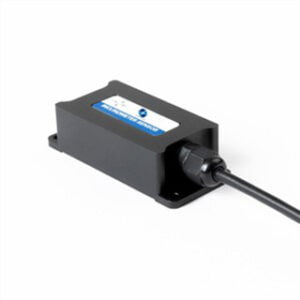Tilt sensors are also known as inclinometers. They are a type of position sensor used to measure the Angle or slope of an object.
Inclinometers are one of the most common types of position sensors and are widely used in many industries.
1.Tilt sensor application
Tilt sensor Angle and slope. So anything that works on Angle will use a inclinometer sensor or a rotary position sensor.
Some sample applications include:
Robotics: Tilt sensors are used to sense the Angle of the robot arm to ensure that the arm movement is in a precise position.
Marine applications: inclinometer sensors are used in a variety of Marine applications, especially boom Angle sensing.
Industrial vehicles: In industrial vehicles, tilt sensors are used to monitor tip protection and for a variety of applications in cranes and construction vehicles.
Aerospace: tilt sensors are used for aircraft orientation and applications on the red arrow.
Industrial applications: Platform leveling is a popular application in the industrial sector that uses inclinometer sensors.
Safety: Tilt sensor Monitors security camera Angle sensing and mobile safety systems.
Mobile phones: Mobile phones are integrated with a very small tilt sensor that changes the orientation of the screen depending on how the phone is held.
Measure ski slope: for safety reasons.
2.How the tilt sensor works
There are different types of inclinometer sensors, and they work slightly differently.
A simple tilt sensor works by using a metal ball that connects two pins and moves within the sensor. When the sensor is tilted, the ball moves position, which connects the circuit that turns the sensor on or off.
More sophisticated inclinometer sensors use an internal gyroscope to measure the direction of the gravitational pull to determine the orientation of the device.
Ericco's tilt sensor is actually the use of MEMS plus meter in the static state can measure the principle of angular velocity. At present, there are conventional (single-axis), dynamic (two-axis), wireless inclinometer sensors, wired and wireless have their own advantages and disadvantages. We can choose the model according to the application scenario and accuracy requirements.
The single-axis ER-TS-3160VO, with an accuracy of 0.01°, is a very popular one with a wide range of applications. Is a very good choice, wireless ER-TS-12200-Modbus, accuracy up to 0.001°, is an ultra-low power, small volume, high-performance wireless inclinometer sensors, for industrial applications users do not need power supply or real-time dynamic measurement of object attitude Angle needs. Using lithium battery power supply, based on the Internet of Things technology Bluetooth and ZigBee(optional) wireless transmission technology, all internal circuits are optimized design, using industrial MCU, three-proof PCB board, imported cables, wide temperature metal shell and other measures to improve the industrial level of the product. Good long-term stability, zero drift small, can automatically enter low-power sleep mode, get rid of the dependence on the use environment. The product has compact structure, precise design, temperature and linearity compensation function, and integrates short-circuit, instantaneous high voltage, polarity, surge and other comprehensive protection functions, easy to use. Wireless digital signal transmission mode eliminates the tedious wiring and noise interference caused by long cable transmission; Industrial design has extremely high measurement accuracy and anti-interference ability. Wireless sensor nodes can form a huge wireless network, supporting thousands of measurement points to monitor the tilt at the same time, and support professional computer software. Without on-site investigation, it can measure and record the status of the tested object in real time. The safety monitoring system is suitable for remote real-time monitoring and analysis of industrial sites, dilapidated buildings, ancient buildings, civil engineering, various tower incline deformation and other needs.
3.Tilt sensor characteristics and specifications
The tilt sensor has the following characteristics;
High reliability
High accuracy
Easy to operate
Not using much electricity
Low cost
Small size, light weight, low power consumption
Anti-vibration, anti-impact, waterproof and dustproof
High stability, low noise, strong anti-interference ability
Different types of inclinometer sensors have different specifications to suit different applications. When choosing a tilt sensor, it is important to consider the following factors;
Sensitivity Some tilt sensors are more sensitive than others, depending on how the increment you need to measure affects the sensitivity of the desired sensor.
Axis number: The number of axes affects the Angle and direction that the sensor can measure.
Resolution: The resolution affects the minimum tilt that the sensor needs to detect.
Measuring range: What is the measuring Angle in the application? This will affect the type of sensor selected.
Accuracy: Different applications may require different degrees of accuracy, so it is important to choose a inclinometer sensors that reflects the requirements.
Noise tolerance: Our inclinometer sensors provide standard noise tolerance.
Certification: requires that we provide inclinometer sensors for intrinsically safe environments as well as underwater applications.
More Technical Questions
1.Static Capacitance Test of MEMS Tilt Sensor
2.How to Improve Accuracy of Tilt Sensors
3.Analysis of Influencing Factors of Measurement Error of Tilt Sensor
4.How to Compensate Temperature of Tilt sensor
5.Stability Test and Analysis of Tilt Sensor
6.Why and Where are Tilt Sensors Used


